 It was the perfect day in Old San Juan, spent with good friends, great food and a wonderful tour guide. On a recent Caribbean cruise, I made another interesting food discovery in the port of San Juan, Puerto Rico. A group of friends joined me on a tour of Old San Juan that featured food and drink native to this island. We had decided prior to embarking on the cruise that we would be looking for something unique and apart from the usual cruise ship excursions.
It was the perfect day in Old San Juan, spent with good friends, great food and a wonderful tour guide. On a recent Caribbean cruise, I made another interesting food discovery in the port of San Juan, Puerto Rico. A group of friends joined me on a tour of Old San Juan that featured food and drink native to this island. We had decided prior to embarking on the cruise that we would be looking for something unique and apart from the usual cruise ship excursions.
So, after spending the afternoon sampling all that the Bacardi Rum Factory in the suburb of Catano had to offer in its tasting room, we took a ferry across San Juan Bay back to where the ship was docked at Old San Juan. We had booked an evening food and cultural tour of the historic district through “Flavors of San Juan”, a small locally-owned company that was created, according to their website, “…to help travelers and locals discover the hidden culinary and cultural treasures in the off-the-beaten-path areas of San Juan…”. Based on our experience that evening, I would say the owners have put together a perfect combination of sightseeing, dining, and an educational tour that really enhances any visit to San Juan.
 The tour began at Carli’s Bistro, a local nightspot owned by Carli Munoz, a famous Puerto Rican jazz pianist. In addition to yet another opportunity for Bacardi cocktails, this was one of the stops for appetizers. This one consisted of local codfish fritters, tostones (fried plantain chips), and barriguitas de vieja (squash pumpkin fritters). The tostones were topped with a spicy mayo sauce. The fish was very fresh. Since I had been looking for a long time for something to do with plantains, the tostones gave me ideas (although later on the tour I got an even better idea at Rosa de Triana). The pumpkin fritter was sweet and delicious, the perfect ending to the appetizer sampler.
The tour began at Carli’s Bistro, a local nightspot owned by Carli Munoz, a famous Puerto Rican jazz pianist. In addition to yet another opportunity for Bacardi cocktails, this was one of the stops for appetizers. This one consisted of local codfish fritters, tostones (fried plantain chips), and barriguitas de vieja (squash pumpkin fritters). The tostones were topped with a spicy mayo sauce. The fish was very fresh. Since I had been looking for a long time for something to do with plantains, the tostones gave me ideas (although later on the tour I got an even better idea at Rosa de Triana). The pumpkin fritter was sweet and delicious, the perfect ending to the appetizer sampler.
Second stop was Cuatro Sombras Café where we tasted pure mountain-grown Puerto Rican coffee. Even on a Sunday evening the place was very busy and full of energy. The aromas that hit me as we walked in the door were fantastic. The coffee itself was sweet and smooth. For my taste, it didn’t need any additional sweetener or milk. I brought a couple of packages of coffee home with me, but since have learned that it can be ordered online.
All along the way throughout the tour, various architectural treasures were pointed out by our excellent guide, Victor Blay, who is a student of architecture at the University of Puerto Rico. These included the Cathedral de San Juan Bautista, the Governor’s Mansion, the Paseo de la Princesa, and the Chapel of Christ the Savior (Capilla del Christo).
Our next stop was at Café El Punto where we sampled tostones rellenos (stuffed plantains) in the entryway surrounded by local artists’ paintings, carvings and other works of art. These tostones, unlike the ones we had at Carli’s Bistro, were made from mashed plantains that were shaped like empanadas and filled with beef. They were deep fried and delicious.
At Barrachina, one of the places reputed to be the birthplace of the Piña Colada, we learned about Don Q Cristal and Ron del Barrilito, the two original Puerto Rican rums and, of course, sampled the famous drink made with rum, coconut cream, and pineapple juice.
For the main course of the evening we dined at Rosa de Triana. Here we were treated to mofongo, the most famous of local Puerto Rican dishes. Victor explained to us that the ingredients symbolize two classes of old Puerto Rican society: plantains which grow on the island and were available to everyone, including the poor; and rice and beans, which had to be imported and were affordable only to the upper class. The mofongo was brought to the table in authentic carved wooden cups (a pilon or mortar) with a pestle to mash the garlic, butter and fried plantains. We were warned to start mashing very slowly to prevent liquid butter squirting all over the table (which I managed to do anyway). Once we got it to the right consistency, we added stewed chicken with a flavorful tomato sauce. Rice and black beans were served on the side. It was another discovery for me for the use of plantains and by far the most delicious food we had on the entire tour.
The last stop on the tour, after strolling through the cobblestone streets past beautiful old restored houses, La Fortaleza (the Governor’s official residence) and the San Juan Gate entrance to the city in the fortress wall, was Café La Princesa for postre, or dessert. Flan de coco, a custard made with coconut and caramel, was a very tasty conclusion to the evening.
 I would highly recommend this food tour if you are ever in San Juan. It was both fun and educational. Old San Juan was a surprisingly clean and beautiful place to visit. I wish we had more time there. I hope to return soon.
I would highly recommend this food tour if you are ever in San Juan. It was both fun and educational. Old San Juan was a surprisingly clean and beautiful place to visit. I wish we had more time there. I hope to return soon.

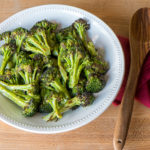
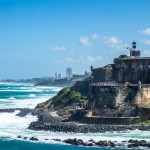
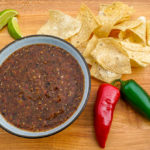
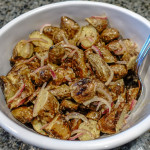
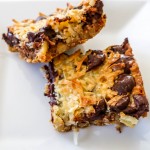

Beautiful photos and it brought back so many memories of my trips to San Juan. I would love to go back some day. Thanks for sharing.